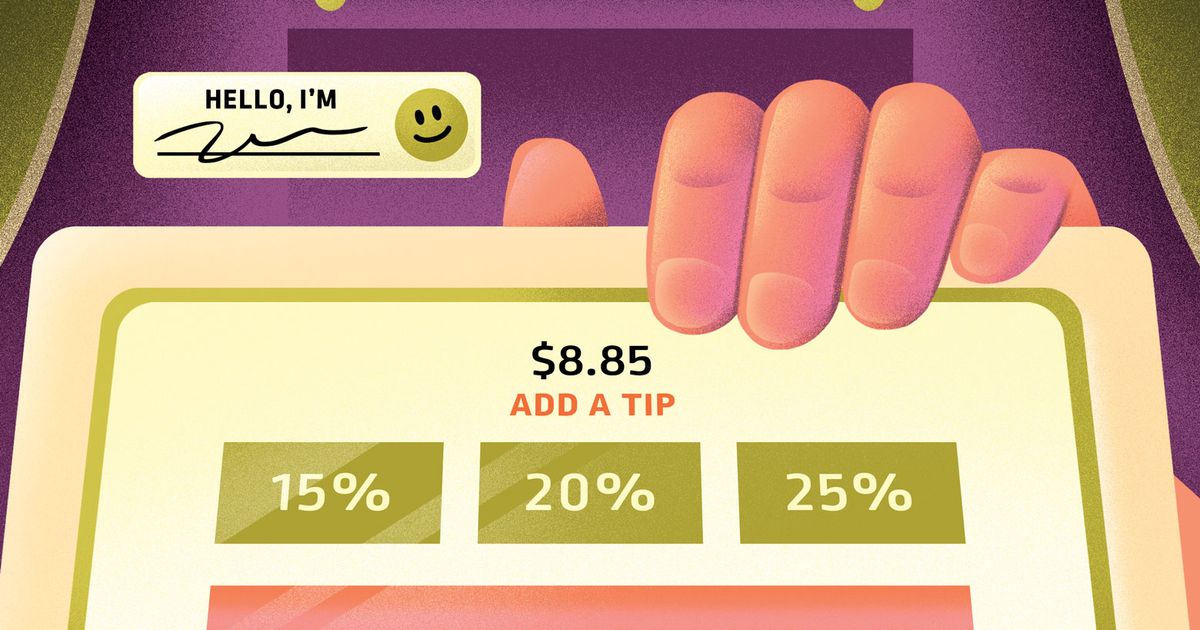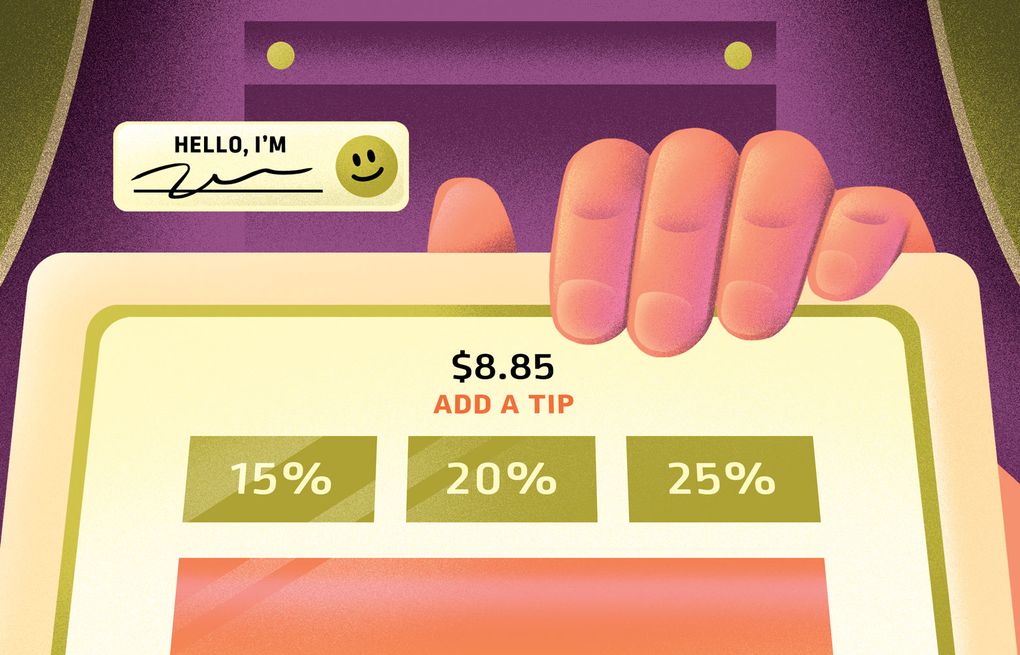Earlier this month, The Seattle Times took a hard look at all things tipping: its ugly past, the intersection of tech and tips, gratuity etiquette tips from experts, splitting tips and more.
We wanted to hear from consumers, too, so we posed these questions to our readers:
What determines whether or not you leave a tip?
Do you tip some industries and not others?
Has your tipping philosophy changed since the pandemic?
These were some of the responses (edited for clarity and length).
Restaurants should not rely on tips to pay living wages
One reader said “basing a tip on the amount of the bill is silly. … Does a waiter at a high-end restaurant really work harder than the server running around at an IHOP?”
“I tip more generously since the pandemic began, even for takeout orders. But when COVID is behind us, I wish we’d go back to tipping’s original purpose — a rare and unexpected thank you for exceptional personal service. Instead, tipping in the U.S. is an inequitable and misleading way to pass a business’ labor expenses directly to the customer without reflecting this real cost in menu prices. True costs should be clearly listed and servers’ wages should not hinge on the price of food ordered.”
— Tyna E.
“I support living wages. Employers should not be able to run their businesses without paying living wages lucrative enough to attract talented employees. Businesses should not be in business if they cannot afford to pay employees well, and they should include quality training and supervision in the cost of doing business, or they should fail as a business. Tipping has become a discussion about how customers should be the ones doing this work for the business, and that is wrong!”
— Anonymous
It’s all about the service and effort
Several readers said they tip based on the quality of food and table service. One said they leave 20% for all table service. If the food is bad and the service is good, they will still leave 20%. If both the food and service is bad, “then I leave $1 so it is understood that both were bad.”
“For me, the type of service determines the range and amount of personal attention determines the placement in that range. Generally, I tip about 10% for takeout because there’s no connection or attentiveness — just boxing up my food instead of serving it on a plate; there’s no personal connection or ongoing service. I’ll bump up the tip for takeout if it’s especially well done and thoughtful or stands out in some way. For in-restaurant dining, my range is 15%-25%.”
— Anonymous
“My tip depends on how much of a service the worker has provided for me. For example, if I got to a self-serve frozen yogurt place and the cashier spins the iPad around for me to tip, they aren’t getting anything. If I am at a restaurant with waiters, or a place like Subway or MOD Pizza where they are building my food, I am more than happy to toss a tip their way for their service.”
— Anonymous
Looking outside Washington suggests the system is broken
Several readers pointed to places outside Washington (and the United States) where tipping is not expected.
“I abhor tipping. I wish everyone would just charge a fair price for a clean transaction. This is the way they do it in Japan. You’re not left with the guilt and confusion about what and if you should tip, and pricing is completely transparent.”
— Ben H.
“I tip 15% unless the experience was exceptional. I’m aware that tips complete the income needs of those who literally depend on them. That said, I was never happier than when I lived for a time in Australia where there is no tipping expected because service workers are paid enough to preclude dependence on whimsical customers to meet their income needs.”
— Anonymous
“I lived in Texas until this summer. Minimum wage was $7.25 and tipped wage was $2.13. I had to tip there because that’s literally what people live on. I thought the higher minimum wage [in Seattle] justified the higher prices on food. Everything costs nearly 2 times as much, and now I’m learning it’s still not enough? Damned if you raise wages, damned if you don’t.”
— Anonymous
Bigger tips in recent years
One reader said they always leave a 20% tip, for both takeout and dine-in meals.
“I like good service. Since the pandemic, I appreciate those who came back to work, so I tip servers 40%-50%.”
— Rick K.
Tipping requires too much thinking these days
One reader said they’re “not interested in subsidizing wages … I tip 10% for service, 15% for good service and 20% for excellent service.”
“The extreme increase in drink prices definitely has an impact. I agree with the recommendation that we tip $1 per beer, but now that a beer costs $12, and when the machine tells you to tip 20%, that’s $2.40. Plus, since [bars] don’t have to make change, they often add the sales tax on instead of including it in the price, so now one beer with tax and tip costs $15.72. Unacceptable. I definitely use the ‘custom tip’ button and enter in $1. Or click ‘no tip’ and leave a dollar in cash.”
— Kirk H.
Tipping mania has become overwhelming
One reader questioned if they really need to tip on their doughnut order. They said they worked at Taco Time for 35 years and “did not get tipped ever.”
“Tipping has gone off the rails. It used to be only for exceptional service, now it is a requirement for an ever-expanding group. Tipping hotel-room staff didn’t used to be a thing — the argument is, ‘Who doesn’t want a clean room?’ Well, a worker at a nuclear power plant doesn’t get tipped, but who doesn’t want a safe reactor? Who doesn’t want friendly checkout at a department store or a helpful clerk in the county office? Where does it end? Salaries should pay for expected service.”
— Steve O.







